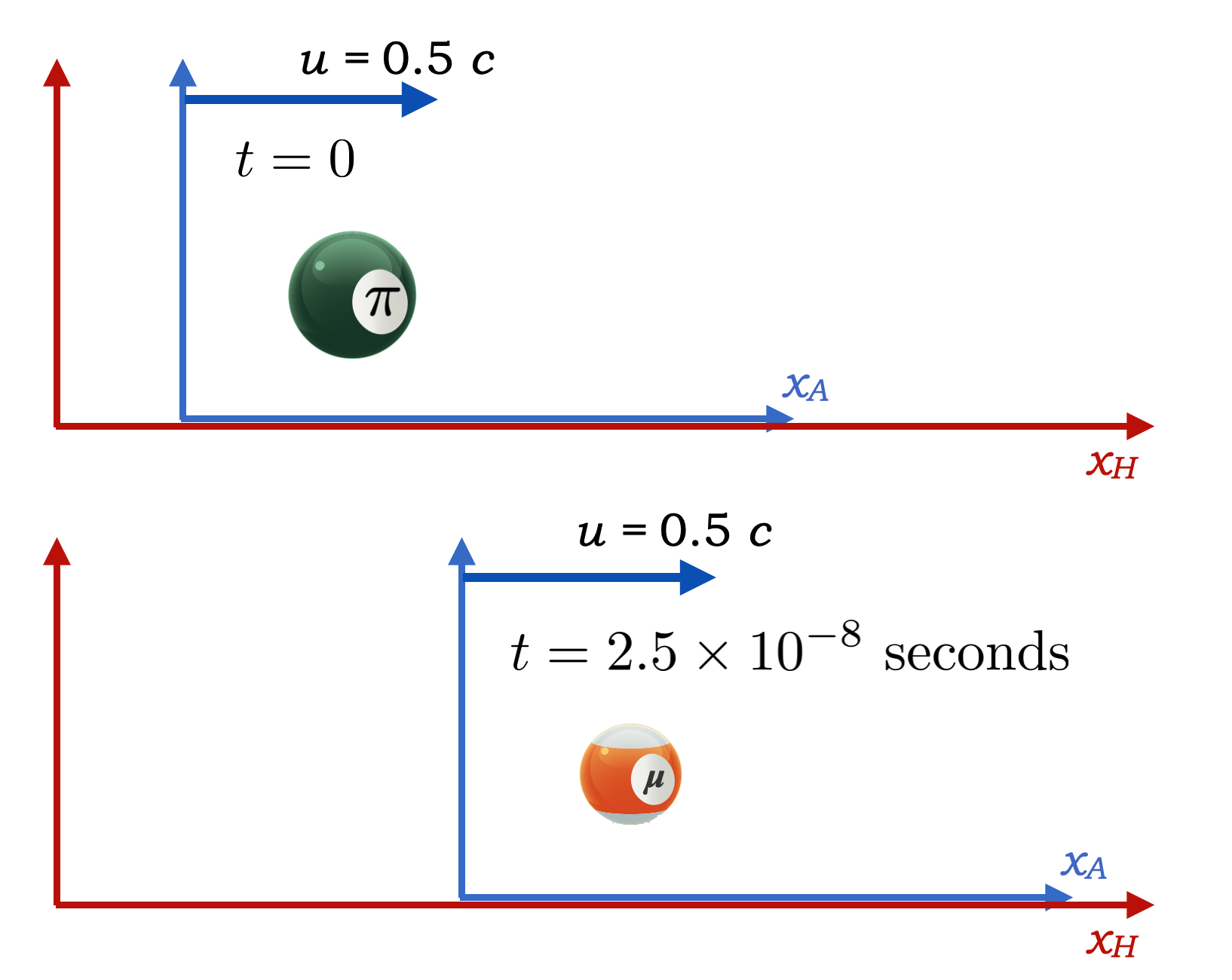Relativity 2#
Example 1: The Decay of an Elementary Particle#
The Question: There are only three kinds of elementary particles that appear to be absolutely stable. We’re made of electrons, protons, and neutrons, right? Neutrons by themselves don’t hang around very long – a 100 neutrons will become 50 neutrons in about 15 minutes! Think of it. One moment a neutron is minding its own business and quite randomly, it suddenly becomes a proton, and electron, and the strange elusive particle called a neutrino.
Although our theories do suggest that protons might decay, all attempts to confirm that have not seen it yet. The lifetime of a proton is more than \(10^{34}\) years, which is impressive since the age of the universe is about \(10^{10}\) years. Likewise, theories can accommodate an unstable electron, but searches for that possibility lead to a lifetime that’s more than \(10^{28}\) years. Lucky for us, as our bodily atoms decaying around us would be a disappointment.
One unstable particle that we’ll learn about is called the “pion” (”\(\pi\)”) and it decays into another unstable particle called a “muon” (”\(\mu\)”) which in turn, decays into an electron. The lifetime of a pion is about \(2.5 \times 10^{-8}\) seconds…25 nanoseconds. They are readily produced in cosmic rays and artificially in accelerators. So let’s do that.
The scenario:
A pion is produced in an accelerator and moves away from its place of birth at a speed of half that of light. The pion is itself its own rest frame (the “proper frame”)
The lab in which it was produced is where we are observing. So the lab is Home and the pion’s frame is Away and is moving at \(u=0.5c\).
The pion decays into a muon after one of it’s lifetimes of \(2.5 \times 10^{-8}\) seconds. So we have a distinct interval: the pion is born and then the pion decays. It’s a little clock with one “tick” and never a “tock.”
How long does the pion appear to live as observed in the lab, Home, frame?

The Answer:
This is a very standard example of time dilation. In our language now:
\(t_A = 2.5 \times 10^{-8}\) seconds
\(u=0.5c\)
\(t_H\) is what we want to determine.
From the time dilation model we know that:
\(t_H = \gamma t_A\)
so we need to know what \(\gamma\) is which we can get from the graphs in the text.
\(\beta = 0.5\) gives \(\gamma = 1.154\)
so the time that the pion lives in the laboratory is
The pion appears to live longer to us than it does to the pion itself.